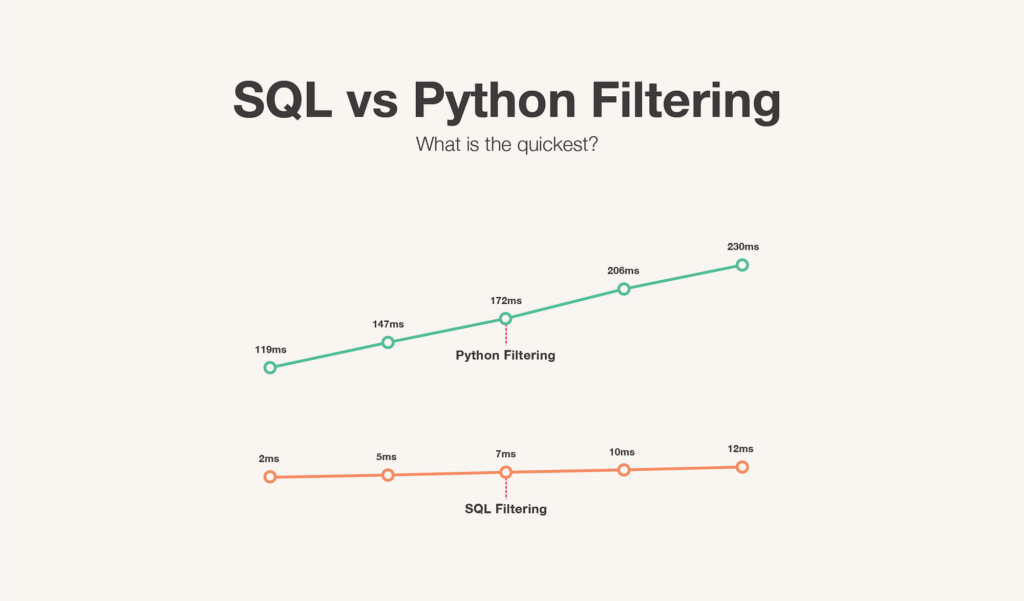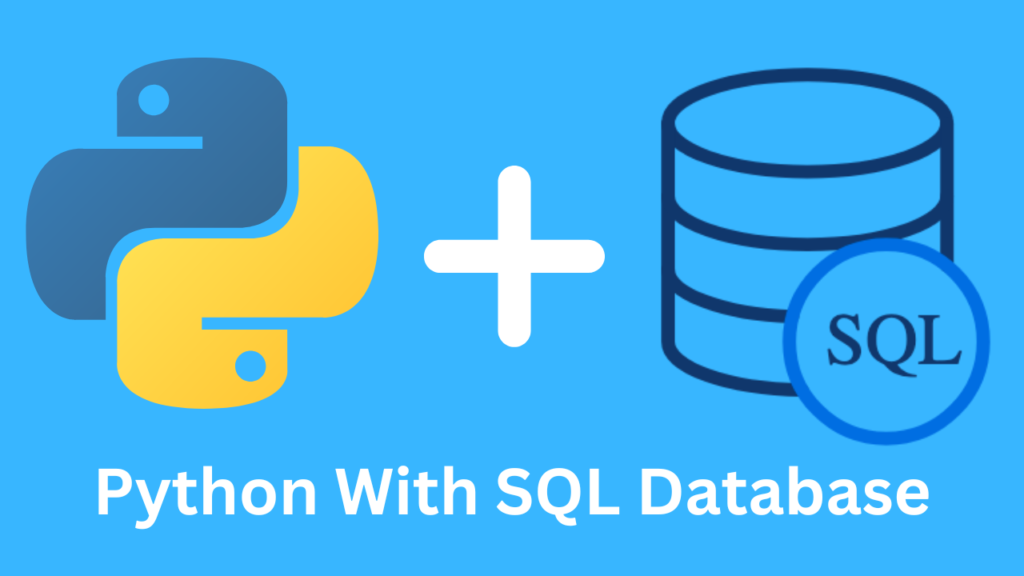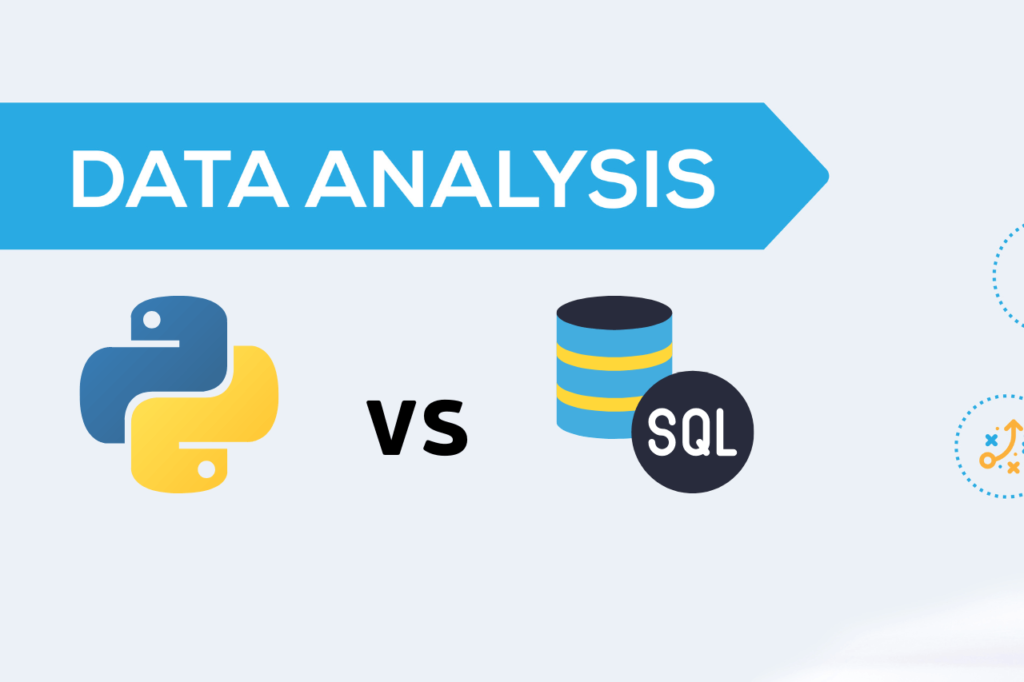Python and SQL serve complementary roles in data management and analysis. While SQL is designed specifically for interacting with relational databases, Python is a versatile programming language with extensive libraries for various tasks. Python can interact with SQL databases using libraries like SQLAlchemy or psycopg2, enabling tasks such as executing queries and retrieving data.
Additionally, Python’s rich ecosystem of libraries, including pandas and numpy, facilitates data analysis and manipulation, often in conjunction with data from SQL databases. Python scripts can automate tasks like data extraction and transformation from databases, while Python web frameworks like Django and Flask can leverage SQL databases to build dynamic web applications.
What are the primary functions of SQL and why is it efficient?

SQL, or Structured Query Language, serves as a powerful tool for managing, manipulating, and querying relational databases. Its primary functions can be broken down into several key aspects:
SQL is like a super smart tool for organizing and managing information in databases. It helps us do a few important things:
- Find Stuff: We can use SQL to ask the database questions and get specific answers. It’s like asking a really smart librarian to find exactly the book you’re looking for in a huge library.
- Change Stuff: With SQL, we can also change the information in the database. It’s like being able to add new pages to a book, update some old pages, or even rip out pages we don’t need anymore.
- Set Rules: We can tell the database who’s allowed to see or change certain information. It’s like deciding who gets a key to which rooms in a big house.
- Keep Things Safe: SQL helps us make sure everything stays in order when we’re making changes. It’s like having a special spell that keeps everything tidy and safe.
SQL is really good at what it does because
- It’s Clear: We tell SQL what we want, not how to do it. It’s like telling a chef what dish you want, and they figure out the best way to cook it.
- It’s Smart: SQL knows how to do things quickly and in the best way possible. It’s like having a super-fast helper who knows all the shortcuts in a big maze.
- It Saves Space: SQL can make things smaller so they take up less room. It’s like having a magic shrinking machine for your stuff.
- It Remembers: SQL keeps important things in its memory, so it doesn’t have to go searching for them again and again. It’s like having a friend who remembers everything you tell them, so you don’t have to repeat yourself.
How does Python complement SQL in database interaction and data analysis?
Python and SQL are often used together in database interaction and data analysis to leverage the strengths of each language. Here’s how Python complements SQL:
Data Manipulation and Analysis
While SQL is powerful for querying and manipulating data within databases, Python offers additional flexibility and functionality for data manipulation and analysis.
Python libraries like Pandas, NumPy, and SciPy provide extensive tools for data manipulation, analysis, and visualization, allowing users to perform complex transformations, statistical analysis, and advanced visualizations on data retrieved from SQL databases.
Scripting and Automation
Python excels in scripting and automation tasks. By combining Python with SQL, users can automate repetitive database tasks, such as data loading, cleaning, transformation, and reporting.
Python’s rich ecosystem of libraries and frameworks, along with its simplicity and readability, make it an ideal choice for scripting complex data workflows that involve SQL database interactions.
Integration with Machine Learning and AI
Python is the de facto language for machine learning and artificial intelligence. By integrating SQL with Python, users can seamlessly feed data from databases into machine learning models for training and prediction.
Python libraries like scikit-learn, TensorFlow, and PyTorch provide easy-to-use interfaces for building, training, and deploying machine learning models using data retrieved from SQL databases.
Web Development and APIs
Python is widely used in web development, and frameworks like Django and Flask make it easy to build web applications and APIs.
By combining Python with SQL databases, developers can create dynamic web applications that interact with databases to store, retrieve, and manipulate data.
SQL is commonly used within these applications to perform database operations, while Python handles the application logic and user interface.
Data Preprocessing
Before performing complex analysis or feeding data into machine learning models, preprocessing steps are often required.
Python offers powerful tools for data preprocessing, including handling missing values, encoding categorical variables, scaling numerical features, and more.
By preprocessing data in Python before or after retrieving it from a SQL database, users can ensure that the data is in a suitable format for analysis or modeling.
What are the strengths and limitations of Python and SQL when used together?

Python and SQL complement each other quite well, offering a powerful combination for data analysis, manipulation, and management. Here are some of their strengths and limitations when used together:
Strengths
Because of its versatility, Python may be used for a lot of activities other than data analysis, including web development, automation, artificial intelligence, and more.
Python may be included into several stages of a data pipeline, such as data extraction, analysis, and visualization, due to its adaptability.
Both novice and seasoned developers may use Python because of its simple, clear syntax. Particularly in collaborative settings, its readability makes codebase maintenance and collaboration easier.
Python boasts a vast ecosystem of libraries and frameworks specifically designed for data analysis and manipulation, such as Pandas, NumPy, SciPy, Matplotlib, and more.
These libraries provide robust tools for handling data structures, performing statistical analysis, creating visualizations, and even implementing machine learning algorithms.
With forums, tutorials, and documentation, a sizable and vibrant community of developers uses Python to exchange expertise, work on open-source projects, and offer assistance. This community support guarantees that developers have access to tools and knowledge to address a range of data-related difficulties while also encouraging innovation.
Python is an adaptable tool for system and platform integration because of its interfaces with other programming languages and technologies. Because of this compatibility, Python programs may easily interact with and handle relational data stored in SQL databases.
Limitations
Python’s interpreted nature and dynamic typing can lead to performance overhead compared to compiled languages like C or C++. This overhead may become more pronounced when dealing with computationally intensive tasks or large datasets, impacting the efficiency of data processing and analysis.
Python’s Global Interpreter Lock (GIL) can limit concurrency and parallelism, particularly in multi-threaded applications where multiple threads attempt to execute Python bytecode simultaneously. While Python offers solutions for parallel processing (e.g., multiprocessing, concurrent.futures), managing parallelism effectively can be challenging.
Managing dependencies and package versions in Python projects can be complex, especially when working with multiple libraries and frameworks. Dependency conflicts, compatibility issues, and version mismatches may arise, requiring careful management and possibly introducing instability into the project.
While SQL is a standardized language, different database systems (e.g., PostgreSQL, MySQL, SQLite) may implement SQL features differently or offer proprietary extensions. This can lead to issues with database portability and compatibility when migrating between different database platforms.
Learning both Python and SQL proficiently requires time and effort, especially for developers who are new to either language. Mastering the syntax, best practices, and nuances of both languages can be daunting, particularly for beginners or those transitioning from other programming languages.
FAQ’s
Will Pandas replace SQL?
Pandas is good for working with data in Python, while SQL is used for organizing and searching data in databases. They do different jobs, so they both have their own important roles to play.
Which is better, SQL or Pandas?
SQL and Pandas are both helpful for different tasks. SQL is great for managing databases, while Pandas is useful for analyzing data in Python. They’re like different tools in a toolbox, each good for different jobs.
Will AI replace SQL developers?
Even though AI can help with some parts of writing SQL, like making queries better, it won’t replace SQL developers entirely. SQL developers have important skills and know-how that AI can’t replace, like understanding how to design databases well.
What has replaced SQL?
There are some new types of databases, like NoSQL and document databases, but SQL is still the main way to work with relational databases. These new databases offer different ways of storing and searching data, but they don’t replace SQL entirely.
What is replacing SQL?
While SQL is still widely used, there are some newer technologies like NewSQL and distributed databases that aim to improve on it. Also, there’s a trend called GraphQL that’s becoming popular for working with data in web development, but SQL is still very important.
Final Words
While Python and SQL each have unique strengths, they work best together rather than as replacements for one another. SQL excels in managing relational databases efficiently and specifically, while Python offers versatility and extensive libraries for data analysis, automation, and web development.
By leveraging Python’s capabilities alongside SQL, users can achieve comprehensive solutions for database interaction, data manipulation, and application development. Ultimately, Python and SQL serve complementary roles in the realm of data management and analysis, maximizing the potential for efficient and effective solutions.
